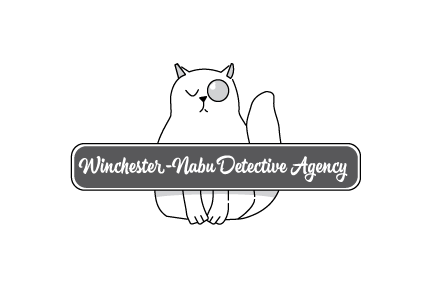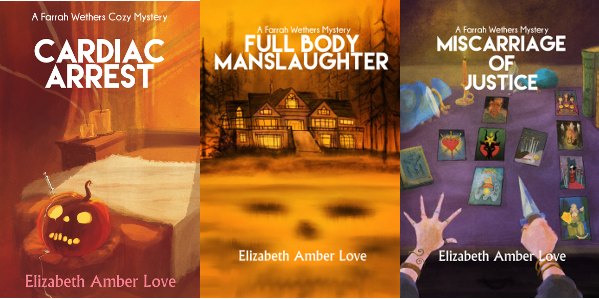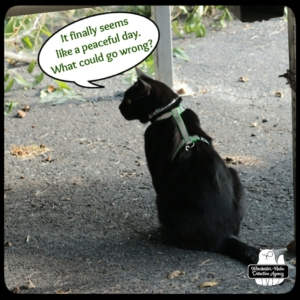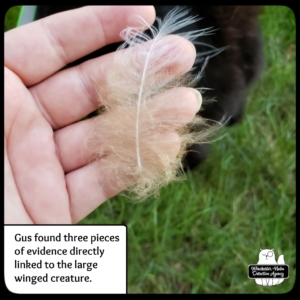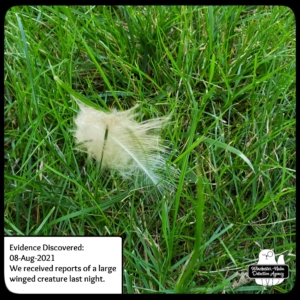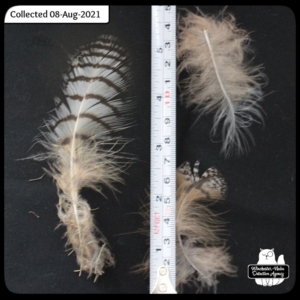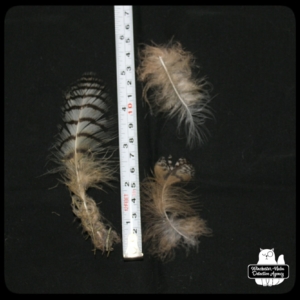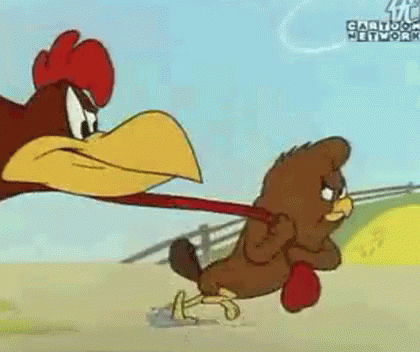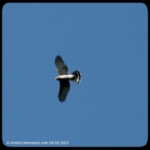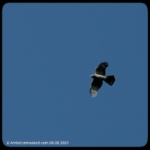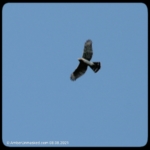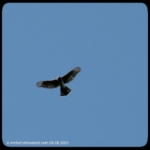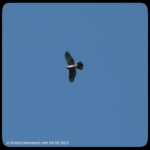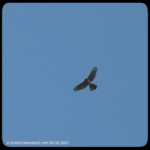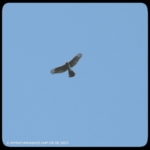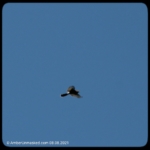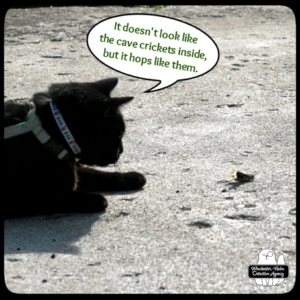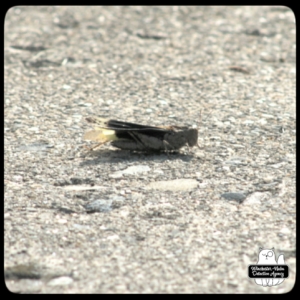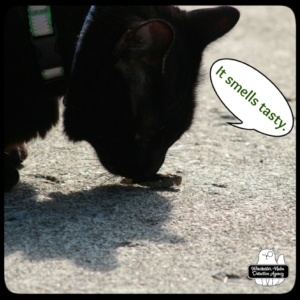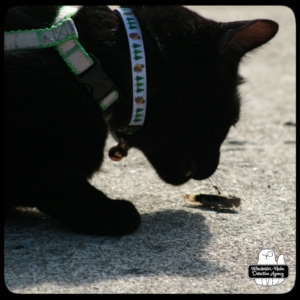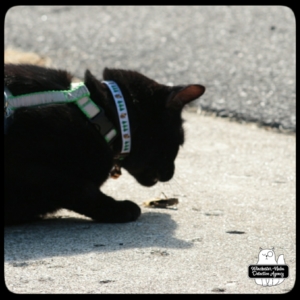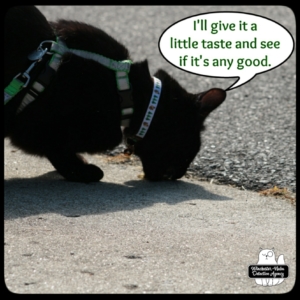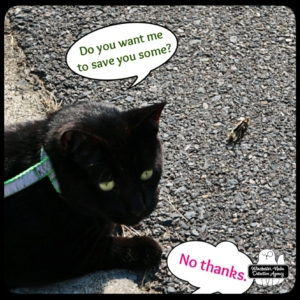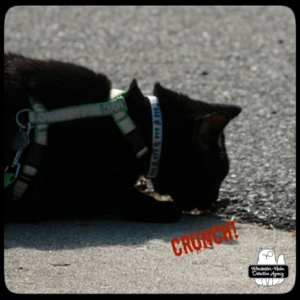Winchester-Nabu Detective Agency Year Five:
Case File No. 21-229
AMBER LOVE 04-OCT-2021 Find out how all this began. Catch up on Year One, Year Two, Year Three, and Year Four cases at the Winchester-Nabu Detective Agency.
This work is supported by the generous backers who adore my cat stories at Patreon.com/amberunmasked and they also get first access to what’s happening with my books and podcast. For a one-time tip, you can go to PayPal.me.
Where We Left Off:
One of our friends in crime fighting, Cara, had a personal interview with Oliver so everyone could get to know her better.
Wings of Fame:
August 8, 2021 turned out to be an interesting date to study some winged creatures. We had no less than three separate investigations during one patrol! The creatures ranged from very tiny to larger than Gus.
Case 21-229A:
It all began when The Cook told us about a mysterious creature she saw during the night. From where she was trying to sleep, she could look out towards Gnome Grove. In the dark, something “really big” was out there only seen as a silhouette. She emphasized how huge it was and thought it was a bear cub until it flew away!
When Gus and I went the following morning, that’s when he found some evidence. I was able to collect three feathers with markings in brown, white, and black. There were white spots on one of the smaller feathers at the end; the largest one had dark stripes. We’ve collected only a few feathers like this in all our years of adventures and research. They always come back as a Great Horned Owl when uploaded to the database.
The U.S. Fish and Wildlife forensics laboratory would like to remind you that feathers are protected. In fact, their website bears this warning which you can see I’ve ignored:
Feathers are beautiful and remarkable objects. If you find feathers in nature, please appreciate, study, photograph them, and leave them where you found them. Under federal law, it is illegal to take them home.
There are several types of birds that could be a match: screech owl, long-eared owl, chuck-will’s widow, or American woodcock. The last two of those I’ve never heard of. As far as whether a feather is illegal or not to take home, from what I previously read, it depends entirely on the species. I wrote to my representatives expressing my opinion that it should not be illegal to collect feathers as long you are not responsible for the bird’s death and the bird is not infected with any diseases. I never heard back.
The Migratory Bird Treaty makes no sense as it stands. It was passed with good intentions during a time period when greedy humans were killing any bird they wanted to use the feathers in fashion. Yet, hunters are allowed to taxidermy whatever they kill. Go figure.
There is no exemption for molted feathers or those taken from road- or window-killed birds.
There is a permit process for wanting to collect feathers which of course involves paying fees; the first fee just to apply is $75. This process seems like a lot of stupid red tape. The federal law says you can’t even collect feathers or bones just because you want to be a personal collector. You’re suppose to send the material somewhere. Again, not hunters! They can do what they want for cheap fees. For Native American religious use, you have to be in a federally recognized tribe which is a status not all indigenous people get. And Native American use is the only religious use permitted.
This permit does not allow anyone to salvage or possess migratory birds for personal use. All migratory birds salvaged must be transferred to a public scientific or educational institution, zoological park, museum or scientific society as defined in 50 CFR 10 or a Migratory Bird Special Purpose Possession permit issued under 50 CFR 21.27
By now, I’m sure you can see that I’m bitchy about this subject. If you think you can collect specimens to merely educate yourself, boy are you wrong. This is such stupid nonsense. Apparently this process is similar for getting ginseng.
 A minimum of 12 educational programs per year is required. If birds are on display in an exhibit for educational purposes, you must be open to the public for a minimum of 400 hours per year. Possession of live or dead migratory birds and their parts for personal use is prohibited.
Citizen science has always existed. It’s far more visible now that we have the internet and shared software databases. How long will it be until the government catches up with us? Are you familiar with the DNA software? Law enforcement agencies can use your DNA to find siblings/relatives who are wanted for crimes. Sure, all they need is a subpoena but I don’t know if that notifies individuals who have used the service or only serves the software company (like Ancestry or 23andme).
I usually stick with looking up laws on New Jersey’s website. I really didn’t know that the feds were so much more strict about something as benign as finding a feather in your own backyard.
Let’s say you don’t care about the laws and just want to see what we discovered. OK, in August we found a total of four owl feathers (three of them at the same time). Assuming these are indeed Bubo virginianus (Great Horned Owl) feathers, I can’t help but think of the Great Owl in The Secret of NIMH. Scary.
If you’re in need of a chuckle, go search “owl legs” and be delighted by the fluffy pantaloons.
Case 21-229B:
Here we have a visual sighting of a member of the raptor family, a Cooper’s Hawk. Like the Great Horned Owl, the female Cooper’s Hawks are larger than the males. How about that?
I also didn’t know that a Cooper’s Hawk goes by many names (just like me) including the famous Chicken Hawk of Foghorn Leghorn legend.
I took a gamble on whether or not the photos would come out. The sky was a gorgeous shade of vibrant baby blue. When the sun reflects off birds’ wings, it can drastically change the color they appear to be. I’ve noticed it after observing many blue jays and how their white bellies look orange in the sun.
I sharpened and brightened the photos before uploading them for identification. I was not convinced it was a Cooper’s Hawk until other people confirmed it.
Gus remained safe and was not picked up as a large meal by the raptor.
Case 21-229C:
Now we come to the tiniest of all from this day’s reports. In one of the parking areas, Gus began chasing something that was hopping around. You see, he has a tremendously good record for bringing me cave crickets during the night in the bedroom. They are creepy af. But here we were, out in broad daylight under a glaring sun.
This was no cave cricket. It’s some kind of grasshopper, but I’m not sure which kind. The genus is Dissosteira. That means nothing to me. I’m not familiar with grasshoppers and to be honest, I don’t wish to be. Gus seemed to enjoy meeting it though.
I only got as close as I needed to be in order to get a photo. Gus got intimate, right up in the hopper’s business. He smelled it, possibly licked it, and definitely crunched it.
Case Findings:
This was a peculiar day in the heat of summer where we had a rare three interactions with wildlife creatures in diverse ways: observing, tasting, and evidence examining. Two of the three could be possible threats, but at the time were not.
Case Status: Closed

